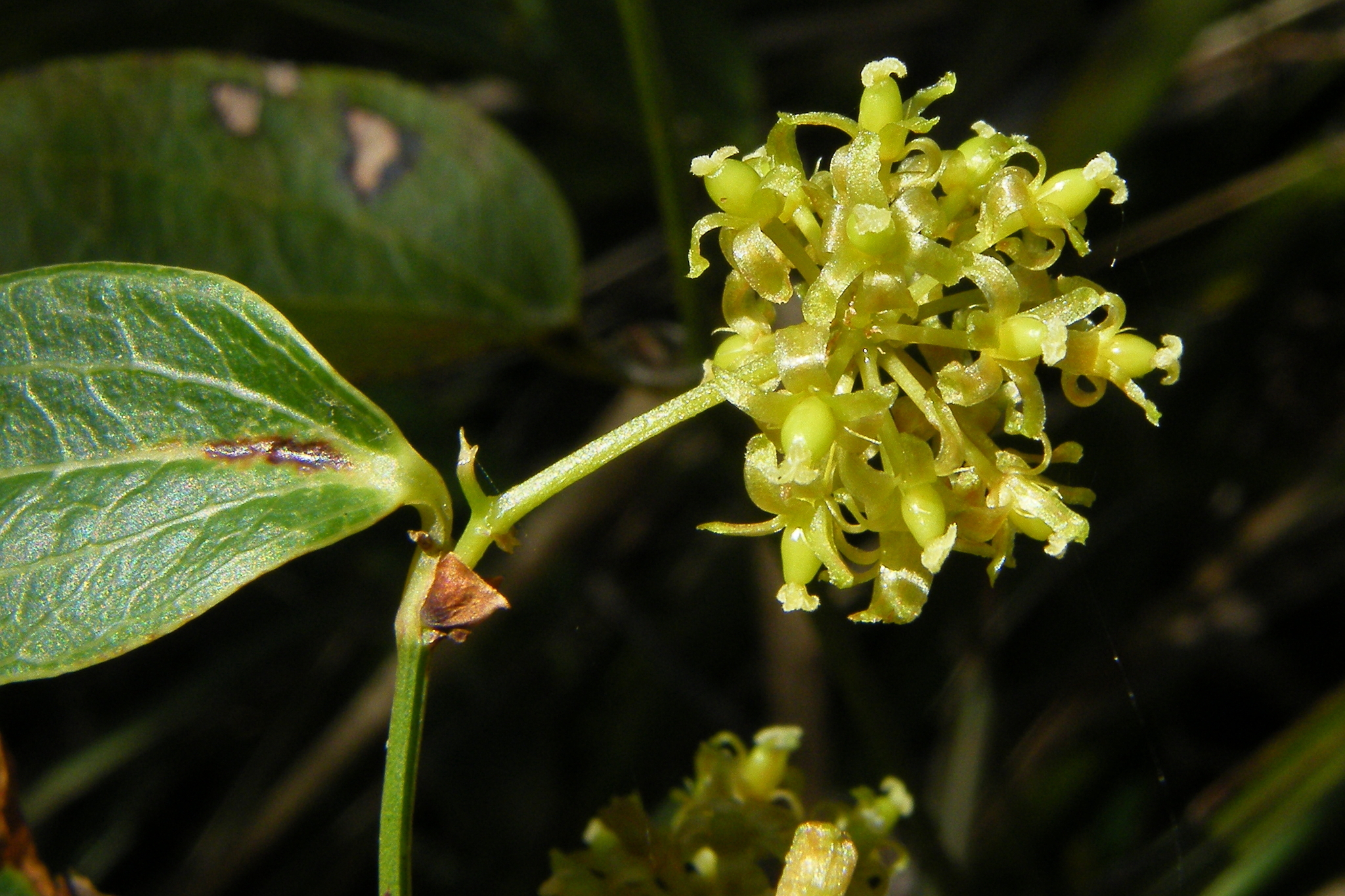
Greek name given byTheophrastus to a probable member of the genus.
Rhizomatous climbers or creepers with fibrous roots and often prickly stems. Leaves generally tough with 2-6 convergent longitudinal veins; stalk often with paired tendrils. Male and female flowers superficially similar but on separate plants. Flower clusters in axillary umbels with numerous stalked flowers. Petals and sepals free. Male flowers with 6 free stamens. Female flowers with a superior ovary. Fruit a berry with few seeds.
Grown as climbing plants for the attractively veined foliage. Grows well in shade.
Cuttings.
About 300 tropical and temperate species.
The berries, tubers and young stems of several species are edible; extracts from the tubers have been used as flavourings, tonics and stimulants.
Recurved prickles; thickened rhizomes; parallel veins with prominent netted veins.
Source: (2005). Smilacaceae. In: . Horticultural Flora of South-eastern Australia. Volume 5. Flowering plants. Monocotyledons. The identification of garden and cultivated plants. University of New South Wales Press.
